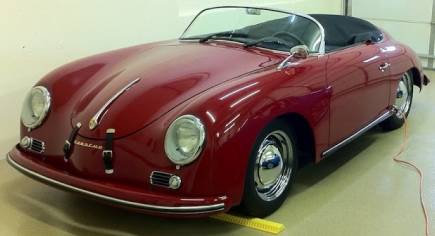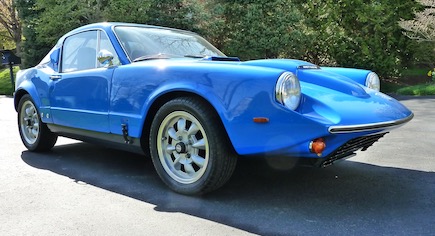Driving range
A major disadvantage of electric vehicles is their limited range compared to gasoline engines. The popular press describes range anxiety, the fear of running out of battery pack electricity in an isolated area far from a convenient wall plug, as a primary barrier that must be overcome for broad adoption of EVs.

Spreadsheet from range road testing
Road testing of the electric 356 has demonstrated a maximum range of approximately 140-145 miles. In actual practice, the useful range is about 90% of this maximum, or about 125 miles, because a complete discharge of the battery pack could cause individual cell loss.
There is no risk of fire or explosion. If the vehicle is driven to the full extent of its range, the cell with the least capacity, say 199 amp-hours versus a pack average of 203 amp-hours, would reach a state of complete discharge before the remainder of the pack. This could harm that individual cell.
For this reason, a safety margin of about 10% of capacity is figured into range estimates to allow for individual cell capacity variances as well as differences in driving conditions that may impact range, such as ambient temperature, terrain, and vehicle speed.
A further safety margin is provided by bottom balancing the entire cell pack.
Fully charged system voltage is 125.5 volts. However at noted above, this measurement is made immediately after recharging when cells still hold a residual surface voltage. After a day, the voltage settles down to the “real” nominal cell voltage of about 3.39 cell voltage for an effective full pack voltage of 121.9 to 122.0 volts.
The Cars
Porsche 356 Speedster

The iconic Porsche Speedster proved to be an excellent EV conversion candidate due to its low weight, relatively simple design, and ample front/rear compartments for mounting pristmatic lithium battery cells. Weight distribution was improved over the original rear engine configuration with better acceleration and overall performance.
Saab Sonett

The unusual fiberglass Sonett, originally powered by a Ford V4 engine, combines a low center of gravity and front wheel drive, optimal for our high performance EV conversion. Without the need to accomodate a long drive train, the space behind the two seats was used for additional batteries. The original four-speed transmission remains intact along with the braking system.